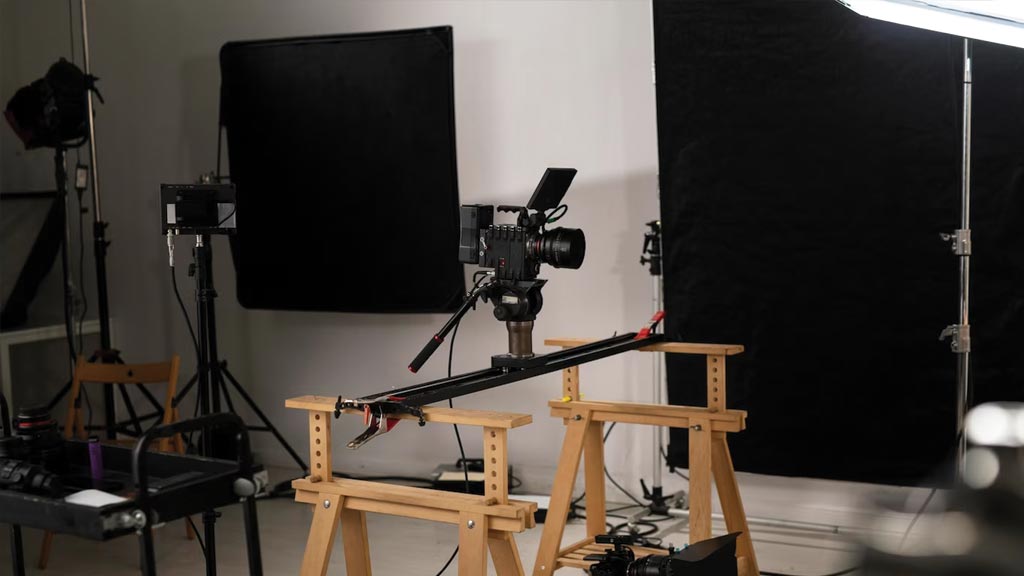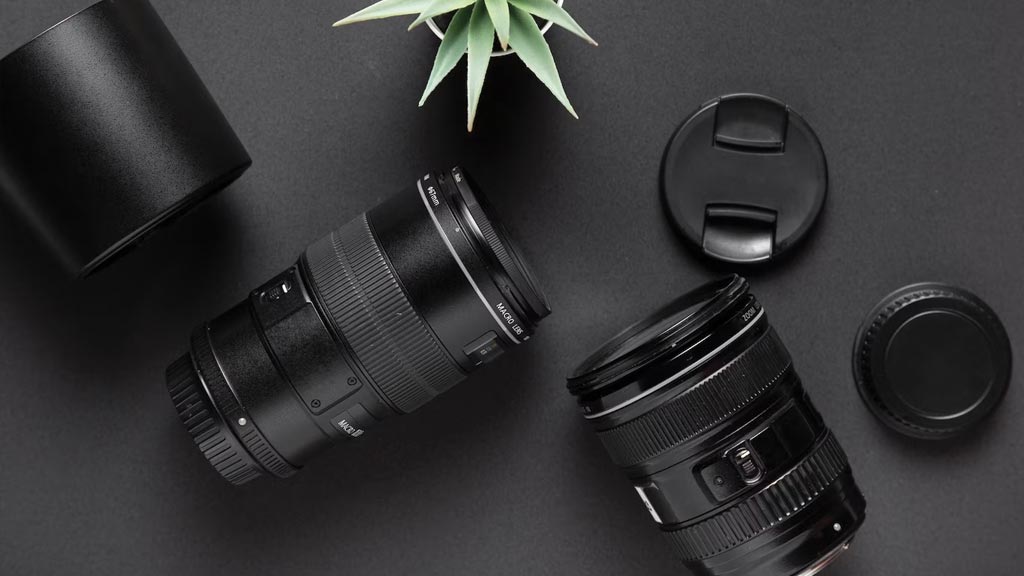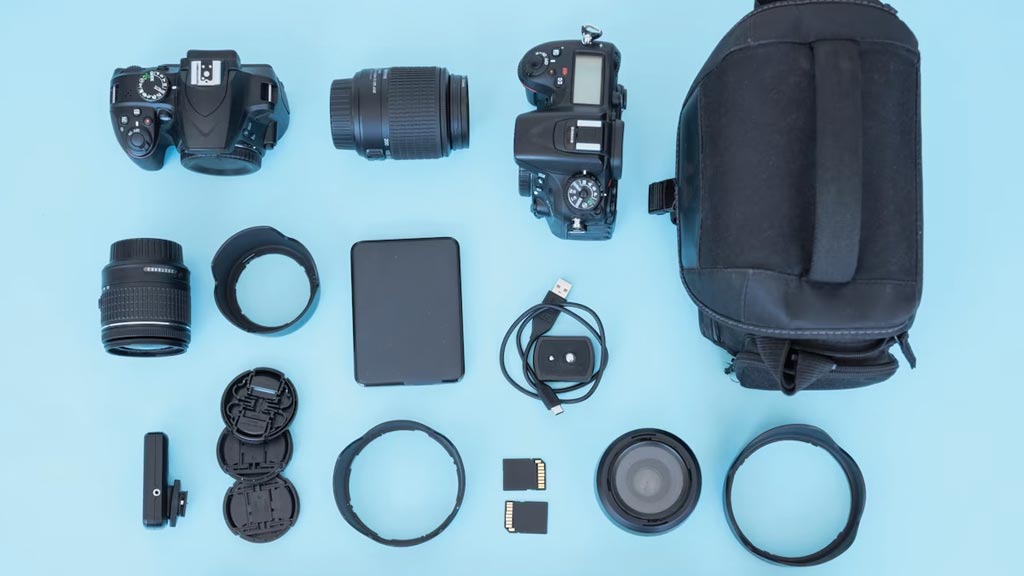- Free Estimates

As video production grows in popularity, it’s important to understand the equipment for making a great video. Video production has become an essential part of the modern business landscape, with more and more companies turning to video to promote their products and services. A well-produced video can help businesses reach new audiences and stand out. However, creating a high-quality video requires more than a good idea and a camera. Each piece is crucial in creating a high-quality end product, from cameras to lighting. So let’s explore the equipment that goes into producing a great video.
Cameras are the heart of any video production, and choosing the right camera can make all the difference in the outcome’s quality. This section will explore the different types of cameras used in video production services in Hartford, CT, and how they contribute to creating stunning videos.
Cameras are crucial in capturing the footage and translating the filmmaker’s vision onto the screen. A high-quality camera can help to capture stunning shots with crisp details and vibrant colors. On the other hand, a low-quality camera can produce blurry, distorted images that detract from the video’s overall quality.
Here are three types of cameras commonly used in video production:
DSLR cameras are a popular choice for video production because of their versatility and relatively low cost compared to other types of cameras. In addition, they offer high-quality video and allow for interchangeable lenses, which gives filmmakers more creative control over their shots. As a result, DSLR cameras are ideal for producing high-quality video on a budget.
Cinema cameras are designed specifically for video production and offer some of the best image quality. They are more expensive than DSLR cameras but are worth the investment for professional-level video production. In addition, cinema cameras provide excellent color grading capabilities, high dynamic range, and cinematic depth of field.
Action cameras are small, portable cameras that are designed for use in extreme conditions. They are popular for capturing footage in outdoor and sports-related settings. They are rugged, waterproof, and shock-resistant, perfect for capturing footage in harsh environments.
Cameras are one of the most critical elements of video production, and choosing the right camera is essential for producing high-quality video. Each type of camera has strengths and weaknesses; knowing which one to use in each situation is crucial for capturing the desired mood or tone. For example, a DSLR camera can provide versatility in capturing different shots, while a cinema camera can help create a cinematic feel to the video.
Lenses are a vital component of video production equipment, significantly impacting the final output’s quality. Choosing the right lens can make all the difference in capturing a specific mood or tone for the video. In this section, we’ll take a closer look at lenses, the types of lenses commonly used in video production, and how they contribute to the overall video production process. As a video production service provider in Hartford, CT, we can’t stress enough how essential it is to have a range of lenses to create high-quality videos.

Lenses are crucial in capturing the perfect shot, especially for video production. The right lens can help to set the scene, capture emotions, and provide context for the viewer. The wrong lens, on the other hand, can create distortions, make the shot look unnatural, and disrupt the overall flow of the video. Therefore, selecting the right lens for the video is essential for a successful outcome.
Various types of lenses are used in video production, each with strengths and weaknesses. Here are three common types of lenses:
Zoom lenses allow for adjusting the focal length, making it possible to capture various shots without changing lenses. Zoom lenses are versatile and commonly used in video production due to their flexibility and relatively low cost compared to other lenses. Filmmakers can use a zoom lens to capture both wide shots and close-ups, thus enabling them to capture a range of shots within a short period.
Prime lenses have fixed focal lengths and can’t zoom in or out. As a result, they’re ideal for capturing emotions and moods that can’t produce zoom lenses. They’re also useful for producing a shallow depth of field, which can be useful when the filmmaker wants to highlight a subject in the frame.
Wide-angle lenses are great for capturing wide shots and establishing shots. They’re also useful in tight spaces where fitting a camera is challenging. Wide-angle lenses allow filmmakers to create an immersive, expansive feel to the video. They’re ideal for capturing landscapes, cityscapes, and other wide shots.
Lenses are critical in video production, affecting the shot’s quality, framing, and storytelling. Choosing the right lens is essential for conveying the desired emotion or mood to the viewer. The right lens can also add depth to the scene and create a more cinematic feel to the video. For instance, using a zoom lens can provide versatility in capturing different shots, while a prime lens can help to create a specific look or feel to the video.
Video production accessories are essential tools that can help to take your video production to the next level. From tripods to filters and gimbals, each accessory plays a unique role in creating high-quality videos. Let’s take a closer look at some of the most common video production accessories used in video production services in Hartford, CT.
Video production accessories can help improve the final output’s quality by adding stability, control, and creativity to the shots. A good accessory can help to make a shot look more professional, polished, and engaging. They can also help to create a specific mood or tone, making it easier to tell the story effectively.

Here are three common video production accessories used in video production:
A good tripod is essential for keeping the camera steady and producing smooth, professional-looking shots. Tripods come in different shapes, sizes, and materials, offering varying degrees of stability. As a result, they’re ideal for situations where the camera needs to remain steady, such as during a long shot or a time-lapse.
Gimbals are handheld stabilizers that help create smooth, steady shots while walking or moving the camera. They’re ideal for capturing shots where the camera needs to move, such as during a tracking shot or a pan. In addition, gimbals can help to create dynamic, engaging shots that add movement and excitement to the video.
Filters can be used to adjust the color and tone of the footage and can help to create a specific look or mood. They’re ideal for adding a creative touch to the video and can help to convey a particular emotion or feeling. For example, a polarizing filter can help to reduce glare and reflections, while a graduated neutral density filter can help to balance the exposure between the sky and the ground.
Video production accessories play a critical role in the video production process by enhancing the quality of the footage and adding creative control to the shots. They can help to add stability, movement, and creativity to the shots, making it easier to tell the story effectively. These accessories allow video production services in Hartford, CT, to produce high-quality videos that stand out from the competition.
Producing a high-quality video requires a combination of expertise and the right equipment. From cameras and lenses to lighting and sound equipment, each piece of equipment plays a crucial role in creating a stunning video. Video Production Services in Hartford, CT, has the expertise and equipment to produce a video that captures your vision and exceeds your expectations. By understanding the different types of equipment used in video production, you can make informed decisions about your own video projects. Whether you need a corporate video, a promotional video, or a social media campaign, Video Production Services help you create videos that effectively convey your message and engage your audience. Contact us today to learn more about our services!